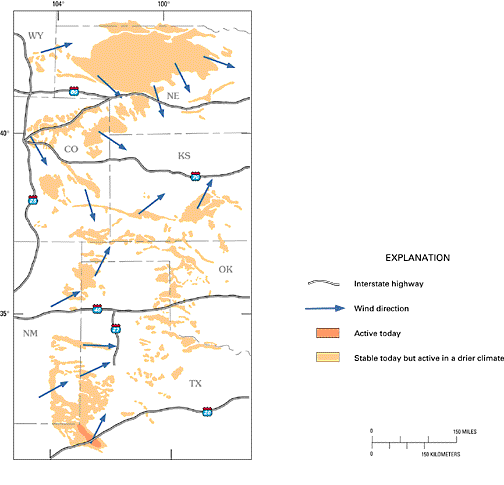
Highlight 10--Great Plains Sand Dunes Show Recent Mobilization
Sand dunes are extensive on the Great Plains, and the Nebraska Sand Hills region is the largest sand sea, active or stabilized, in the Western Hemisphere. Although winds on the Great Plains are presently stronger than in most of the world's deserts, these Great Plains sand dunes are now inactive, stabilized by sparse prairie vegetation cover. Recently, GD geologists and coworkers determined that most dunes on the Great Plains have been active in the past 3,000 years. Many were found to be active during the 1800's, and some were active during the Dust Bowl drought of the 1930's. Thus, it can no longer be assumed that these dunes pose little threat of reactivation in the future since they have been active under climatic conditions that are only slightly different from the present.
If the dunes are reactivated in the future, either from human-caused global warming or natural climatic variation, there would be significant changes in the region (fig. 10). These potential changes include loss of grazing and crop land, sand movement onto interstate highways and railroads, and loss of wetlands and other wildlife habitats. By understanding how climate variability can affect the landscape, GD geologists can provide essential information to Federal, State, and local planners and land managers, as well as to residents of climatically sensitive regions.

Figure 10. Distribution of dune sands on the Great Plains. Arrows show directions of modern winds. Only one small area of dunes is active today, but most of the region could become active in the future under a drier climate. Map from Muhs and Maat (1993) and Muhs and Holliday (1995).
<----- Back to Goal 4
This page is <https://pubs.usgs.gov/circular/c1172/h10.html>
Maintained by L. McElroy
Last updated 04.08.98

